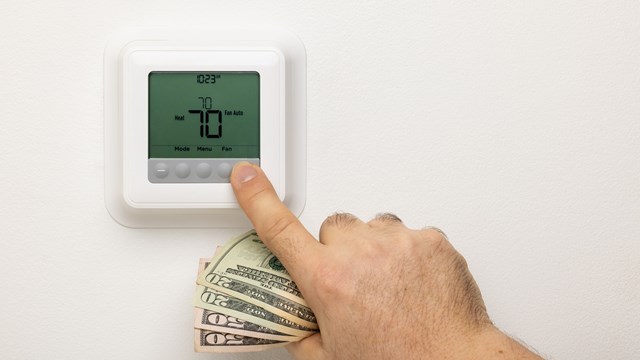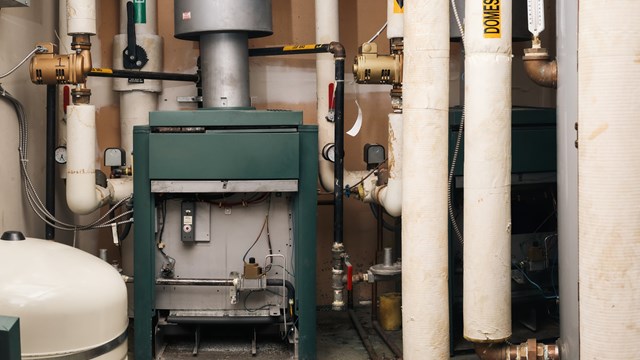When it comes to the list of most important systems to maintain—and potentially the most expensive to replace—in a multifamily building, windows are definitely near the top. The useful life of a given window depends on a number of factors, including its composition and design, as well as seasonal shifts and prevailing weather conditions. Deteriorated windows can lead to problems with other building envelope systems, including façades of all types, from clapboard to masonry and everything in between.
The Useful Life of Windows
“Many buildings keep their windows for 30 to 50 years,” says Michael Wolfe, president of property management with FirstService Residential in New York City. “It’s a massive undertaking to replace all of a building’s windows. It’s not like Local Law 11, which you must do every five years. Total building window replacement is a huge expense, and very difficult on residents.”
Dan Wollman, CEO of New York-based management firm Gumley Haft, reports that he hasn’t done a total window replacement in approximately 15 years. He’s not avoiding the process—it’s just that the methods for maintaining existing window systems have evolved so much over the past few decades that many buildings are able to get many more years of use out of the windows they have. Many co-op and condo buildings now opt to replace windows one unit at time, when a unit is sold or shares transferred, or when a gut renovation of an apartment is underway. In addition to spreading out the cost of the replacement, this approach also minimizes the disruption and disturbance to building residents.
“In the 1980s,” says Wolfe, “when many buildings were converted from rental to co-op and/or condominium ownership, there were building-wide window replacements—usually with aluminum windows. Most of those are still in use in apartments today.” It is those windows that may be in need of replacement, but maybe not; much depends on how well they were installed, and how efficiently they were maintained.
Care & Maintenance
It’s that first part—installation—that really sets the bar for how well a window will perform and how long it will last before needing major repairs or total replacement. “Windows should be properly maintained to reach their useful life,” says Giulia Alimonti, principal architect with CTM Group in the firm’s Manhattan office. “New aluminum windows with insulated glass should last about 15 years, and the window mechanism itself 20 years, assuming locks and hinges are working properly and are regularly maintained. The issue a lot of condos and co-ops have faced over the years is that while windows are part of the building envelope, and in many buildings a part of the common areas, they are very expensive to maintain and/or replace. Either way, associations and corporations have to pass along the cost [to residents], so window replacement tends to be pushed back in favor of more urgent repairs.
“When looking at your windows from outside,” Alimonti continues, “you see glass panes, frame gaskets, and in between the brick and the window there is caulking. They all need maintenance. Glass must be cleaned. Metal must also be cleaned, because pollution damages it. We recommend that communities bring in a professional window cleaner at least twice a year to clean the glass and metal. Inspection of gaskets should be completed at regular intervals as well to prevent water from entering the building envelope. The same should be done for caulking. From the interior, handles and locks should be checked to be sure they are working. Weather strips within windows must be intact and not broken, in which case they need to be repaired or replaced. If you have a company come in once a year to inspect the hinges and weather stripping, the window will go a long way,” she stresses. “When it’s maintained well, a window can last as long as 25 years. It may seem like a costly investment, but it’s worth it—like doing a tuneup on your car every year.”
Scott Wolf, CEO of Brigs, LLC, a real estate management company located in Boston, concurs, adding that “age is the biggest problem when it comes to windows. The moving parts wear out. With wood and sash windows, if they’re not properly maintained over time, they will deteriorate. Associations need a regular maintenance program to scrape and paint every few years—and certainly when [deterioration is] noticeable. Otherwise, wood windows will rot, while heat will warp vinyl windows. In any case, you need proper maintenance. Silicone seal and clean the interior slides, and clean and paint the outside. On a typical wood sash window, the panes are glazed in—and that glaze deteriorates. Lack of maintenance is usually the short answer for why this happens.”
“In older windows you will see them begin to fog,” says Vickie Grandmaison, senior association manager of Evergreen Management Group in Bedford, New Hampshire. “This is due to cracks in the window seal and gasses escaping. You will also see trim pieces on older windows that need to be scraped and painted. Another sign of deterioration is when you can feel wind blowing around the window which can result in a heating or cooling loss.”
“But,” says Wolfe of FirstService Residential, “you don’t change windows purely for energy savings. If you have a 30-year-old window and it’s drafty, you don’t change it for draft for the payback on energy. It’s just not there.”
Replacement
When is it time to replace your windows? When they are causing problems for other components of the building envelope, such as the façade—and the best bet is to do the two jobs at once. Otherwise repairing the façade may damage the windows and their components, or vice versa.
“What we are seeing today,” says Wolf of Brigs, “is that with a major façade project—say replacing the siding—many associations also do their windows at the same time. It doesn’t always go over well with owners because of the cost, and often lawyers end up involved in a fight. But typically, it’s within the rights of the association to require the change. It’s how they want to pay for it that’s the issue, either up-front, or over time. From the standpoint of a condo or HOA, the first thing owners need to do is read their documents and understand who owns the windows. Is it the entire window including the trim, sashes, etc.? It can be different with every building.”
“The process itself,” explains Grandmaison, “usually begins as a discussion with the owners at the annual meeting. The board will explain that a request for proposal (RFP) was circulated for the project and that three or more project bids will be obtained. Normally, if the cost of the project exceeds the amount previously considered and approved, a vote re-approving the project and budget is taken by the owners and recorded in the meeting minutes. Each vendor’s RFP needs to include specific details, such as the project’s start and end date, and specify how much time will be required to replace each window.”
Replacing every window in a building is a huge project that requires a good bit of finesse and coordination. “I always advise my clients to consider a building-wide replacement as an interior project,” says Alimonti. “They will need access to every unit. Remove everything within six feet of windows. Depending on the replacement, they may need interior touch up paint work as well after the new window is installed. Usually, it’s up to management to coordinate communication between residents and installers.”
“In co-ops,” says Wolfe of New York, “boards must decide who will pay for interior restoration costs. Some co-ops may pay for a primary coat, while the rest is the residents’ problem. It can be very emotional and stressful.”
If a building is landmarked, that status can complicate everything from window repair to window replacement. Landmarked buildings with casement windows may have some alternatives. “What we have done,” says Alimonti, “is ‘fake’ a design that looks like a double hung window, but operates as a casement. The NYC Landmarks Commission considers it on a case by case basis. Whether your building is a landmark or is located in a landmark district is also a consideration.”
“For a historic building the local Historical Society should be contacted first,” says Grandmaison, “to determine and clarify any guidelines that must be followed.”
Options
As previously mentioned, another option many buildings are choosing today is to require window replacement at the transfer of a unit or shares from one owner/shareholder to another. This option is also used when existing owners or shareholders undertake a gut renovation. “Replacement at sale or renovation is common today,” says Wolfe. “We didn’t see that five years ago. It’s the trend to put the cost of replacement on the owner. Keep in mind that the definition of ‘alteration’ is subjective. A board may say if you gut your apartment you have to replace the windows, or if re-doing a kitchen or bathroom you must replace those windows—which can make the exterior of the building look like a hodgepodge. A board can make window replacement a condition of approval on a sale of a co-op, though. The problem in a condo is how restrictive an alteration agreement can be in their documents. In a condominium, owners can do a lot of things without approvals. So you have to ascertain what are the approval rights in your governing documents?”
Regular care and repair will help you reach the longest useful life of the windows you have, and proactive, strategic planning can help make a replacement project less onerous for all.
A.J. Sidransky is a staff writer/reporter for CooperatorNews, and a published novelist. He may be reached at alan@yrinc.com.










Leave a Comment